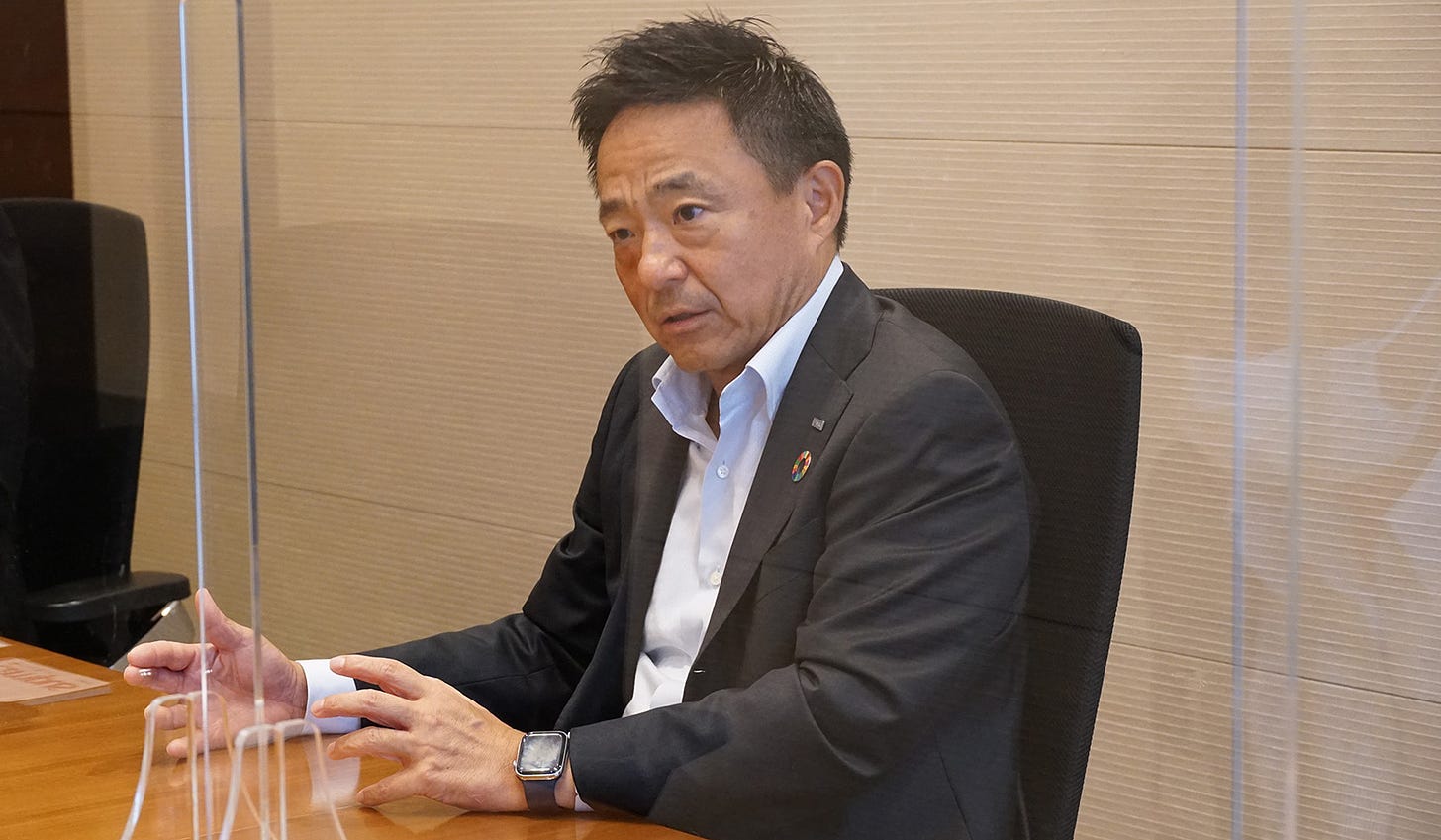Mizuho Bank Reprioritizes Its Domestic Home Mortgage Business
As ultra-low interest rates in Japan pressure Japanese megabanks, all three are announcing bold new strategies to preserve profitability and pursue growth.

What’s new: While Japan’s three megabanks have been quietly reducing their reliance on domestic home mortgages for quite a while, thus far they have been reluctant to mention this policy publicly. While there were signs of a coming formal announcement of a change in policy last November, Mizuho Financial Group (みずほフィナンシャルグループ) recently released details calling for a reduction in home mortgages, traditionally a cornerstone of their retail business in Japan.
Why it matters: The bank will, instead, shift its resources from the relatively low-profit margin businesses of home mortgages, personal loans, and loans to small-scale domestic firms to the higher margin segments of investment banking, wealth management, loans to large multi-nationals, selected overseas operations, medium-sized enterprises, and start-ups. Similar policy shifts are underway at Japan’s two other megabanks.

Go deeper: The competition for home mortgages in Japan has been heating up due to the low interest rate environment. President Masahiro Kihara (木原正裕) has long taken a hard look at mortgage loans. With their low risk-weighted and default rates, they have traditionally been a good source of steady—although not particularly high—income. With the rise of online banks, pressure on profitability from the low interest rate environment has, however, made it doubtful whether Mizuho would be able to secure a profit on new deals only.
One of the reasons for the timing of the change in Mizuho’s strategic vision was the suspension of the "Five-Year Plan" formulated under former President Tatsufumi Sakai's (坂井辰史) administration. That plan was originally scheduled to continue through FY2023. The external environment has, however, changed drastically due to Covid and the situation in Ukraine. Sakai’s successor has, moreover, led a “changing of the guard” to revamp the bank’s internal management structure following a series of technical glitches that led to multiple ATM system failures in Japan. Now that this embarrassing problem is under control, Kihara needs to demonstrate a reliable growth curve as a core component of what has been dubbed the "New Mizuho.”
“President Kihara was exclusively in the wholesale (corporate) field. That is probably why he was able to cut through the retail business without hesitation...The bank's branch network, which is the only one of the three megabanks to have branches in all prefectures of Japan, is also likely to come under scrutiny." – Executive from a rival Japanese megabank
Context: Mizuho Financial Group seems to be becoming more aggressive on a number of fronts. They are, for example, counting on future growth from corporate and overseas operations. In the Americas, in May, the company announced the acquisition of Green Hill, an M&A advisory firm. Combined with the original base of operations in the U.S. of its former entities (Dai-Ichi Kangyo Bank, Fuji Bank, and the Industrial Bank of Japan), Mizuho has also bolstered its position with the North American loan assets of The Royal Bank of Scotland, a major U.K. financial institution that it acquired in 2003. Thus, Mizuho now has a large base from which to launch future growth projects in the Americas.
In Japan, President Kihara emphasizes "mid-sized companies" in addition to traditional large corporate customers. For Mizuho, the company had been stretched thin between large corporations and start-ups. In Japan, there are a fair number of companies, but many of them have low market capitalization. In April, Mizuho established the Business Growth Support Office, a new department specializing in listed and unlisted mid-cap companies.
The goal is to achieve a net business profit in excess of 1 trillion yen (approximately US $7 billion) for the fiscal year ending March 31, 2026. This would be a major milestone that the company has never reached since the establishment of this BHAG back in 2003. Some in the market are skeptical about whether Mizuho can really achieve this goal, and Kihara’s management team is being tested to see whether it can carry through with its "selection and concentration" strategy or sentaku-to-shuchu (選択と集中) policy, as it is known in Japanese.
Similar moves by the competition: Bold choices are being made by Mizuho’s rivals, too. Sumitomo Mitsui Financial Group (三井住友フィナンシャルグループ), which also announced its medium-term business plan in May, is focused on a new initiative called "Olive (オリーブ)," a financial application for internet banking. It integrates personal financial services such as deposits and withdrawals to and from bank accounts, securities investment, card settlement, and insurance into a single application. It is designed to keep individual customers within the group.
"We have decided on areas to cut in order to raise management resources to be invested in priority areas. The first of these areas is payments and settlements. In February, SMBC unveiled its secret weapon (Olive): a new standard in financial services.” - Fumihiko Ito (伊藤文彦), Senior Executive Officer and Group CFO

No doubt SMBC sought a new approach to its declining balance of mortgage loans. The Olive initiative seems logical, especially considering the strength of the bank’s credit card unit.
Since its establishment, SMBC has teamed up with Visa to expand its power. The bank now boasts the highest number of credit cards issued and transaction volume in Japan, ahead of its peers Mitsubishi UFJ NICOS and Mizuho-affiliated UC Card.
SMBC's retail division earns 40% of its gross business profit from its payment settlement business, including credit cards. Olive is a mechanism to encourage the use of credit cards rather than providing loans. In June, a new point service was announced jointly with Culture Convenience Club's T-Point, with the aim of promoting credit card use.
In principle, all personal transactions, excluding those of the wealthy, will be consolidated under the Olive program.
The consolidation of brick-and-mortar branches has run its course, but existing branches will be converted to "outlets" operated with a minimum number of staff, and the company expects to reduce annual expenses by about 30 billion yen ($211 million) by curbing operating costs.
Mortgage loans remain a non-focus area and are subject to rationalization in the overall retail business.
Scrap-and-build is likely to occur overseas as well. In Southeast Asia, the company will expand its full-line commercial banking business, starting with a local bank in Indonesia, Bank BTPN, which will raise its net income to 50 billion yen ($351 million) in three years. In the Americas, the company has also decided to open an online bank and take an additional stake in the major securities firm Jefferies. On the other hand, in Europe, where the cost of complying with regulations is heavy by country, unprofitable businesses are expected to be scaled back or withdrawn.
Not to be forgotten: Japan’s 3rd megabank, the Mitsubishi UFJ Financial Group (三菱UFJファイナンシャル・グループ), whose current medium-term management plan will end this fiscal year, is also stirring up the market.
In Southeast Asia, where the company is investing its management resources, the company's business is led by the Bank of Ayutthaya in Thailand and Bank Danamon in Indonesia. The focus is on shoring up Thailand's slowing growth. Even before Covid, the economic growth rate of Thailand was around 2-3%, and the local government predicts that the population will begin to decline in 2028.
"Thailand's growth will soon come to a standstill. We need to be proactive in neighboring countries as well." – Senior MUFG executive
In 2022, the Bank of Ayutthaya acquired consumer finance companies in Indonesia and the Philippines. Both countries have a lower ratio of household debt than Thailand, and the bank believed that there was still room for consumer finance to penetrate these countries. The question is whether the bank can sustain growth through M&A involving neighboring countries, as well.
On the other hand, in Japan, the consolidation of branches will be completed in FY2023. In addition to asset management for large corporations and wealthy individuals, which has been a focus for some time, President Hironori Kamezawa (亀澤宏規) has high expectations for MARS Growth Capital, a joint venture with an Israeli fintech company.
The company has been active in Singapore since the end of 2008, providing loans to startup companies. This firm uses AI (artificial intelligence) and big data to make credit decisions for startups, which are difficult to screen using the old method that emphasizes financial statements.
"It's only been two and a half years, but we're getting a pretty good response.” - President Kamezawa
In May, the MUFG decided to establish a fund to provide loans to startups in Japan. If the companies they finance achieve growth, then the bank can expect not only financial profits but also additional revenue derived from investment banking services such as initial public offerings.
What’s next: Japan’s megabanks are scrambling to find seeds for profitable growth wherever the likelihood of achieving higher profits from traditional businesses like domestic home mortgages seems possible. They cannot do everything, and trade-offs are inevitable. Now that each of the megabanks has revised their vision and strategy, the next few years will likely focus on their ability to implement effectively.
Link to Japanese Source: https://toyokeizai.net/articles/-/684722
#MizuhoFinancialGroup #MasahiroKihara #TatsufumiSakai #greenhill #HironoriKamezawa #SumitomoMitsuiFinancialGroup #FumihikoIto #Olive #MitsubishiUFJ #MARSGrowthCapital #みずほ銀行 #木原正裕 #みずほフィナンシャルグループ #坂井辰史 #新みずほ #三井住友フィナンシャルグループ #伊藤文彦 #オリーブ #亀澤宏規 #三菱UFJフィナンシャルグループ #マーズグロースキャピタル







Does MFG have a new CEO? This all sounds like classic banker greed from a new CEO who wants to make a name and a big pile of stock options for himself. Isn't the problem with higher-margin business that those higher margins are there to compensate for higher risks? Should MFG be taking higher risks just when the global economy is stumbling into a deep recession? Or should it be grateful in such circumstances for its portfolio of boring, low-risk home mortgages?